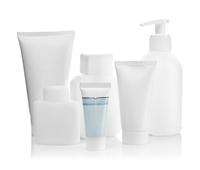Triclosan in cosmetics and personal care products can increase allergy risk

Triclosan - an antibacterial chemical found in toothpaste and other products - can contribute to an increased risk of allergy development in children. This comes from the Norwegian Environment and Childhood Asthma Study, in which the Norwegian Institute of Public Health is involved. Similar results are reported in the USA.
Triclosan has been in use for decades, but was recently associated with allergies in children in an American study, the National Health and Nutrition Examination Survey (NHANES). The new Norwegian study found similar associations between allergies and triclosan levels measured in children's urine.
The study found that triclosan levels measured in urine were associated with elevated levels of Immunoglobulin E (IgE) and rhinitis (blocked nose/hay fever) in 10 year-olds.
623 urine samples were collected and measured at the Center for Disease Control and Prevention in Atlanta, USA. Approximately 50 per cent of the Norwegian children had detectable levels of triclosan, while 80 per cent of American children had measurable levels. The children had approximately the same amount of triclosan exposure.
Triclosan can change the bacterial flora on the skin, in the mouth and in the intestines. A change in the bacterial composition of "good" bacteria can cause an increased risk of developing allergies (hygiene hypothesis). Therefore, increased use of triclosan and antibacterial products has generally been associated with an increased incidence of allergies.
Reduce consumption
For many years, the health authorities in Norway have called for a reduction in the use of antibacterial products to prevent the development of resistant bacteria.
In a study of triclosan use in Norway in 2001, it was found that 85 per cent of the total amount of triclosan came from cosmetic products, of which 75 per cent were toothpaste. Since this study, triclosan has been removed from a variety of products.
The extent to which Norwegian children are exposed to triclosan is today uncertain. In the USA, where they have annual sampling and monitoring of chemical exposure, there is little evidence that exposure to triclosan is being reduced.
Facts about triclosan:
- used to prevent bacterial growth
- does not work against all types of bacteria
- added mostly to cosmetic products such as toothpaste, deodorant and soap
- also added to kitchen utensils and textiles
- little triclosan is absorbed through the skin
- significant absorption through the mucous membranes in the mouth (toothpaste)
- has been in use for over 40 years in some products
- from animal experiments we know that triclosan acts to reinforce the development of Immunoglobulin (IgE) towards allergens
More information: Bertelsen RJ, Longnecker MP, Løvik M, Calafat AM, Carlsen K-H, London SJ, Lødrup Carlsen KC. Triclosan exposure and allergic sensitization in Norwegian children. Allergy 2012; DOI: 10.1111/all.12058.














